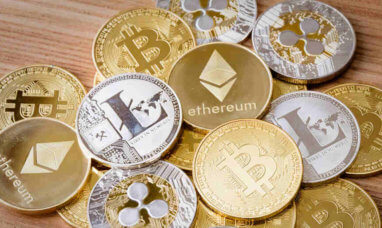Decentralized finance (DeFi) enables anyone on the internet to earn money in the same manner as bankers do: by profiting from the fees on financial services. In the majority of situations, this is accomplished through the provision of liquidity. These investors “stake,” or lend, digital tokens rather than fiat money; they lend the digital currency to decentralized applications rather than individuals or corporations.
One category of apps with a high demand for liquidity and a high volume of transactions are Decentralized Exchanges (DEXs) and specifically Automated Market Makers (AMMs), such as Uniswap and PancakeSwap. But maybe you have a fair share of questions. How do I choose an AMM? Is PancakeSwap legit? How can one determine which AMM is the best fit to pack your crypto assets?
This article serves as a jumping-off point for investors in the DeFi market. Joining a certain DeFi community might include much more than simply contributing cash. It may entail engaging in conversations, assisting new users, voting on governance decisions, and even making proposed modifications to the code and protocol of DeFi applications.
What Is Decentralised Finance (DeFi)?
Today’s market drive is being led by decentralized finance (DeFi) tokens, which have pushed the overall cryptocurrency market value beyond $1.5 trillion. CoinGecko’s index of the top-100 DeFi coins by market capitalization indicates a market value of $79 billion, or around 5.3 percent of the total market value. According to seasoned crypto investor Matthew Roszak, decentralized finance has grown to an $80 billion sector in 2021 and is ready to develop even further.
According to Ethereum.org, DeFi is:
-
-
- A global, open alternative to the current financial system.
- Products that let you borrow, save, invest, trade, and more.
- Based on open-source technology that anyone can program with.
-
Decentralized Finance is an umbrella term for the financial goods and services available to anybody who can utilize crypto—essentially, anyone with an internet connection.
With DeFi, marketplaces are always accessible, and there are no centralized authorities that can refuse you access to anything or restrict payments. Previously manual and prone to human error, services are now automated and safer, as they are managed by code that anybody can access.
There is a thriving crypto-economy where you can lend, borrow, invest in long/short positions, and earn income. Argentina’s crypto-savvy citizens have utilized DeFi to circumvent severe inflation. Some individuals have even obtained and repaid loans totaling millions of dollars without requiring any KYCs. This is the magic Defi can bring.
DeFi is a highly liquid market that runs on Decentralised Exchanges (DEXs). To offer this liquidity, notable Automated Market Makers (AMMs), such as Uniswap, have emerged. Users are enticed to become liquidity providers by automated market makers in exchange for a part of transaction costs and free tokens.
What Are Automated Market Makers (AMMs)?
AMMs are a component of the decentralized finance (DeFi) ecosystem that enables permissionless and automated trading of digital assets through the use of liquidity pools rather than a traditional market of buyers and sellers. Uniswap was the first decentralized platform to use an automated market maker mechanism in 2018 effectively.
The automated market maker (AMM) protocol is the backbone of all decentralized exchanges (DEXs). Simply put, they are self-regulating trading systems that do away with the necessity for centralized exchanges and associated market-making processes.
A centralized exchange supervises trading operations and maintains an automated system that guarantees trading orders are appropriately matched. In other words, when Trader A agrees to purchase one Bitcoin for $57,000, the exchange guarantees that Trader B is willing to sell one Bitcoin at Trader A’s desired exchange rate. As such, the centralized exchange acts as a sort of go-between for Trader A and Trader B.
In comparison to centralized exchanges, DEXs seek to eliminate all intermediary procedures associated with cryptocurrency trading. They are incapable of supporting order matching or custodial infrastructures (where the exchange holds all the wallet private keys.) As such, DEXs foster autonomy by allowing users to conduct transactions directly from non-custodial wallets (wallets where the individual controls the private key.)
Additionally, DEXs eliminate the need for order matching systems and order books in favor of autonomous protocols known as AMMs. These protocols make use of smart contracts — self-executing computer programs – to establish the price and offer liquidity for digital assets. The protocol pools liquidity in the form of smart contracts in this case.
In essence, customers are not trading against counterparties but against the liquidity contained within smart contracts. These intelligent contracts are frequently referred to as liquidity pools. AMM functions to ensure users don’t trade against each other; instead, they deal with the smart contract, a software program. AMM is always ready to buy and always willing to sell at an agreed price.
An AMM works as a series of pools of two crypto-assets like BNB and BUSD with prices that do not reference any external factors. In a nutshell, it’s simply a ratio of two crypto assets. However, AMM has been tweaked and iterated to suit different DEXs and their protocols. Understanding these iterations might assist prospective investors in determining which DEXs to pack their crypto in.
Let’s Look at Different DEXs and the Protocol Iteration of AMM
While most DEXs offer the same capabilities, many use different methods to incentive yield farming and create strong communities.
PancakeSwap
How does PancakeSwap work? PancakeSwap, like SushiSwap, is a modification of Uniswap developed for the Binance Smart Chain (BSC), which similarly utilizes the BNB currency like how Ethereum utilizes ETH. BSC is more centralized, with just 21 validators controlling the chain, and it operates similarly to EOS. This makes BSC more convenient and less expensive to use but far more susceptible to manipulation by outside parties.
As with other AMMs, PancakeSwap liquidity providers are compensated for transactions made inside pools in which they participate. Due to the huge amount of transactions on PancakeSwap and the cheap transaction costs, this should increase activity, allowing members to make greater returns. As is the case with SushiSwap, LPs that stake their interests receive CAKE, the governance token.
Sushiswap
SushiSwap charges the same trading fees as Uniswap. However, SushiSwap’s liquidity mining scheme has never been discontinued. SushiSwap users who staked their LP tokens on the “Sushi Bar” get SUSHI continually. SUSHI’s potential to generate more revenues is appealing in and of itself, apart from its governance capabilities. Uniswap users, for example, don’t earn as much in comparison. Sushiswap maintains a respectable level of governance and assists new initiatives in gaining traction and development.
Uniswap
With its underlying technology being Ethereum, Uniswap continues to lead the DeFi revolution. Uniswap’s latest update enables liquidity providers to choose the AMM curve range in which they will participate. If the price moves outside of that range, their liquidity just waits on the sidelines. As a result of these configurable pools, astute traders would also be able to place orders to purchase at certain prices if they are hit. Thus, a trader may prepare ahead to “buy the dip.” Uniswap refers to this as “ranged pools.”
In version 2.0, Uniswap interface supported flash swaps (in other words, an entire pool of a token can be borrowed for the length of one Ethereum transaction). With version 2.0, it also added an oracle or external data source for settling bets, which it says will be improved in version 3.0. Finally, in version three, Uniswap will allow LPs to modify pool costs slightly, allowing them to, for example, charge a larger price on less often traded pairings.
Yearn Finance
Yearn One’s significant distinction from Uniswap, or SushiSwap, is that it more easily manages pools with various tokens. (Balancer, the DeFi portfolio manager, does the same). This made Curve advantageous for Yearn since it lets users receive returns on all major stablecoins, including DAI, USDC, USDT, and TUSD. Receipts for deposits in such methods resulted in the creation of tokens known as yDAI and yUSDC. As a result, Curve built a pool that facilitates switching between these four pools.
Additionally, users intending to HODL a particular Yearn token can continue to deposit it in Curve’s liquidity and collect transaction fees. Providers of liquidity in Curve pools can earn CRV by staking their LP tokens in Curve’s “gauge.” Curve refers to it as a gauge since it rewards those who have staked for a more extended period of time with a higher CRV.
Final Thought
Understanding the capabilities of these DEXs is essential to equip the investor with the correct information and knowledge in going into the world of DEXs. Therefore, do your due diligence and research before venturing into yield farming and staking.
Featured Image: Twenty20








